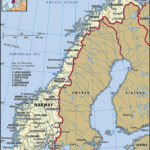St. Thomas, a vibrant and historically rich island, is a prime destination in the Caribbean. But where is St. Thomas Caribbean exactly? This jewel is the chief island of the U.S. Virgin Islands, nestled in the eastern Caribbean Sea, offering a unique blend of natural beauty and cultural heritage. Located approximately 40 miles (64 km) east of Puerto Rico, St. Thomas is geographically positioned to offer stunning Caribbean vistas and a tropical climate.
Geographical Location of St. Thomas: A Caribbean Island Paradise
St. Thomas is a volcanic island, characterized by a rugged, hilly terrain that runs east to west. The highest point reaches an elevation of 1,550 feet (474 meters), providing panoramic views across the surrounding Caribbean waters. This unique topography, while presenting challenges for development, contributes significantly to the island’s scenic charm and distinctive landscape.
Climate and Environment: Tropical Weather in St. Thomas
The climate of St. Thomas is consistently warm, with temperatures ranging from 70 to 90 °F (21 to 32 °C). The average temperature hovers around a pleasant 78 °F (26 °C), making it an attractive destination year-round. While considered semiarid, St. Thomas receives an average annual rainfall of 45 inches (1,150 mm). However, due to evaporation and absorption by vegetation, water resources are a significant concern for the island.
Historical Context: From Colonization to US Territory
The history of St. Thomas is rich and layered. Christopher Columbus sighted the island in 1493, marking its European discovery. Colonization followed, starting with the Dutch in 1657, then the Danish in 1666. By 1672, St. Thomas was under the control of the Danish West India Company, later the Brandenburg Company. The introduction of slavery after 1673 transformed St. Thomas into a major sugar producer in the Caribbean, leading to a period of significant prosperity.
In 1754/55, the Danish king acquired St. Thomas, and Charlotte Amalie was established as a free port, boosting international shipping. Its neutral stance during the Napoleonic Wars further elevated its status as a trade hub and, unfortunately, the largest slave port in the Western Hemisphere. The British occupied St. Thomas twice in the early 19th century before it was returned to Denmark. Economic shifts, including declining sugar prices and the abolition of slavery in 1848, caused economic downturn. In 1917, the United States purchased St. Thomas and two other islands from the Danish West Indies for $25 million, primarily for use as a naval base.
Charlotte Amalie: The Capital and its Harbor
Charlotte Amalie, the capital of St. Thomas, is strategically located midway along the southern coast, built upon attractive hill slopes. The city boasts a naturally well-sheltered harbor, formed within the crater of an extinct volcano. This harbor has been instrumental in Charlotte Amalie’s historical significance as a trading and shipping center.
People and Culture: A Diverse Caribbean Community
The population of St. Thomas reflects a rich mix of cultures. While approximately four-fifths of residents are of African descent, many also have ancestry from Spanish, Portuguese, Scottish, Danish, English, French, and Puerto Rican backgrounds. English is the primary language, though French and Spanish are also spoken within certain communities. A notable challenge is the water supply, as St. Thomas lacks natural wells and relies on water shipped from Puerto Rico, rainwater collection, and seawater desalination, often struggling to meet the island’s needs.
Economy and Modern St. Thomas: Tourism and Beyond
Today, tourism is the dominant industry in St. Thomas, contributing to one of the highest per capita incomes in the Caribbean. Beyond tourism, the island’s economy includes rum distillation (and bay rum production) and watch assembly, which are key export sectors. There is also notable economic connection with the British Virgin Islands, with many of their citizens working in St. Thomas and other US Virgin Islands. St. Thomas, covering an area of 32 square miles (83 square km), continues to be a vital and dynamic part of the U.S. Virgin Islands, attracting visitors and contributing to the Caribbean region.

